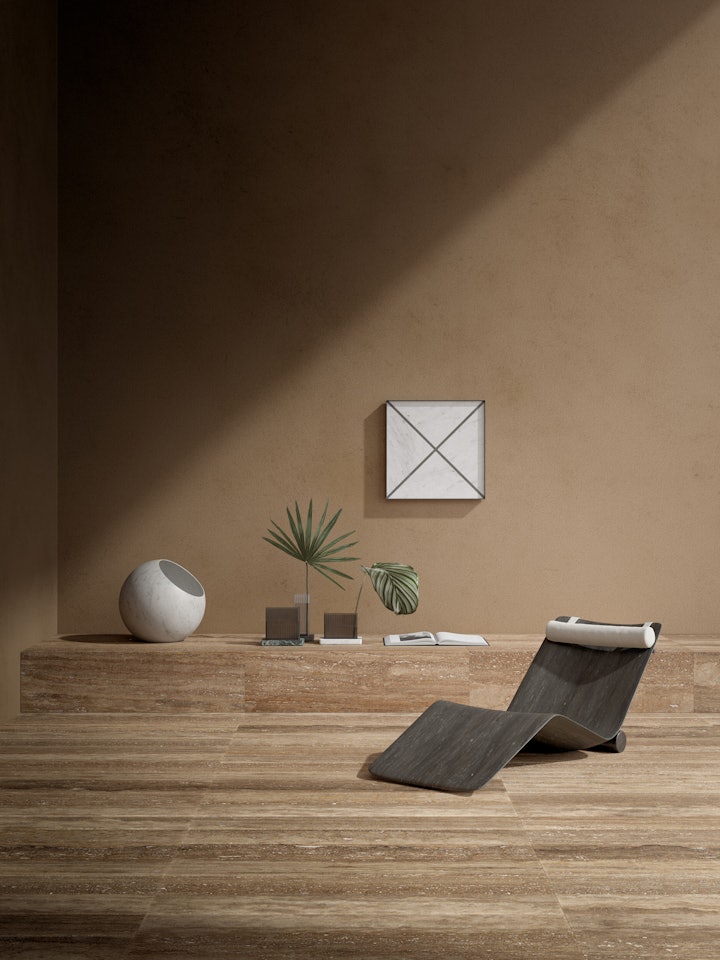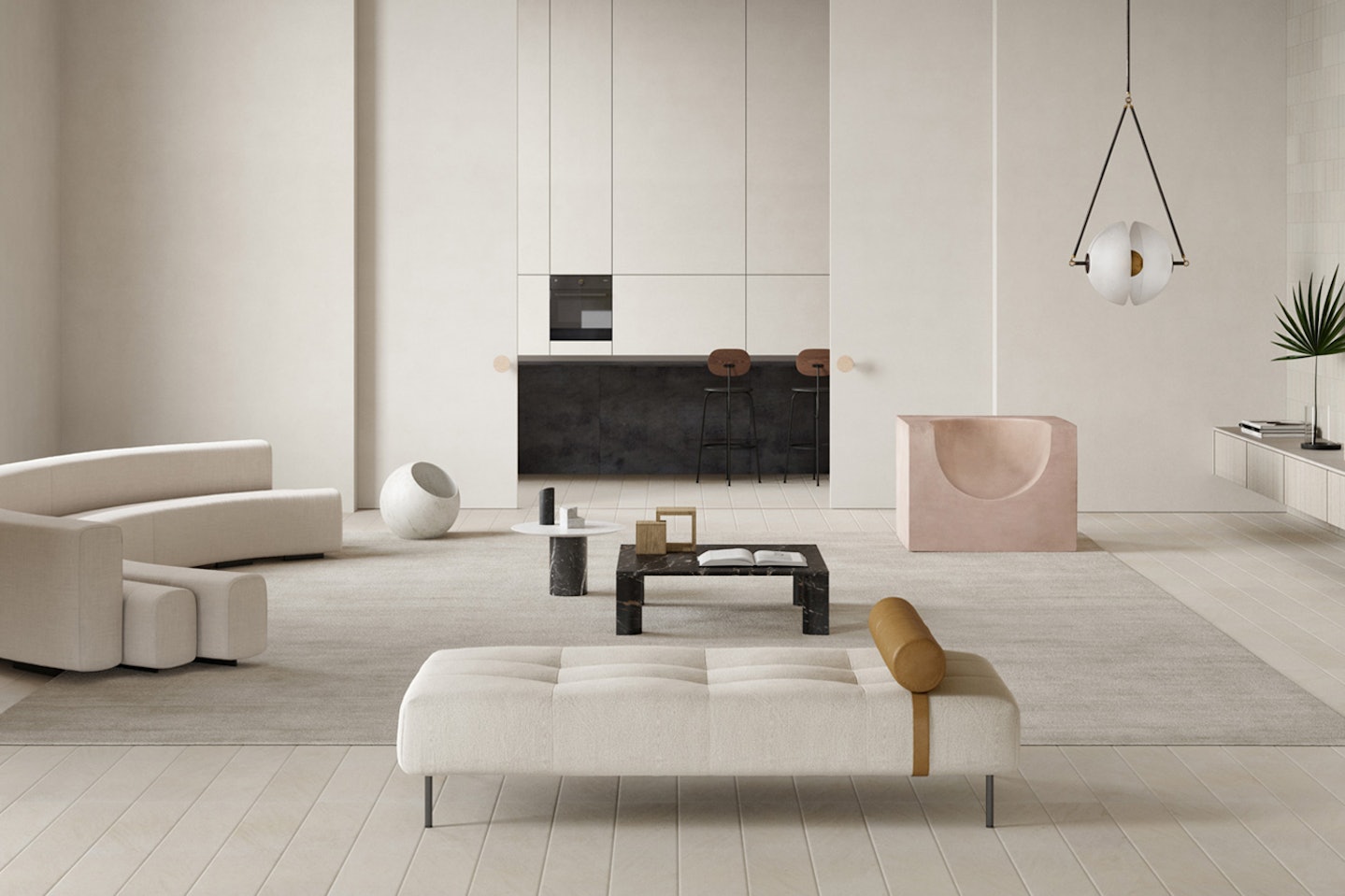A room by room guide to cool and warm lighting
03.2022
Learn all you need to know to choose cool or warm lighting for your home
How to choose between cool and warm lighting in each room
Let there be light. It sounds like a simple enough statement, but the incredible array available of bulbs, let alone types of fittings, is enough to send you into a spin, so we thought we’d make it simple and look at perhaps the most fundamental aspect, both in terms of aesthetics and functionality: warm or cool light?
If you’re familiar with that feeling of bewilderment when you’re standing in front of shelves of lightbulbs, trying to work out what colour light they emit and which is best for the room you’re buying it for, we’re here to help demystify the matter.
In this article, we’ll take a look at what is meant by temperature, colour, and how to choose the best lightbulb for each room of the house.

Temperature and colour
When we talk about light colour, whether natural or artificial, in effect we’re actually talking about warmth in the temperature sense. This parameter, also widely used in photography and astronomy, measures the light in Kelvin degrees, denoted by the letter K.
The spectrum of light temperature runs from the reddish tones of warm light through to the bluish shades of cool light, with warm light produced by cooler temperatures and heading up the scale delivering a cooler appearance.
If we take, for example, a candle that emits an orange-red glow, it will have a temperature of around 1,000K, while the sun shining in a clear blue sky will typically be around 10,000 to 20,000K.
As a general rule, warm light is usually produced at 1000 to 3300K while cold or cool light typically hovers around 4000K.

Cool or warm light – which is best?
Now that we have clarified the numbers and the way light colours are measured, the inevitable next question is “which is best’”.
The answer to that is that it depends. There is no right or wrong, with both cool and warm light having advantages and disadvantages, and as often happens when speaking about interior décor, it comes down to what effect you’re looking for, and the function a particular element should perform.
The fundamental thing to consider is the psychology of lighting, or the effect it has on the environment and atmosphere and, consequently, our mood. Cool tones tend to be more invigorating, making them suited for activities requiring high levels of concentration, while warmer tones are more conducive to relaxing.
As always, however, there will always be a certain element of personal taste, as well as the style of décor in the room in question, and here, lighting plays an important aesthetic role.
The right type of lighting is often the final magic ingredient that brings a room to life and sets the décor off to perfection. In a modern-style home, cooler tones are popular, whilst warmer light is often more suited to classic settings.

Neutral light
At this point, let’s add a third type of colour to the mix, as it’s not always about a straight choice between cool and warm. The Kelvin scale covers a wide spectrum of tones and sitting just above cool, we find a neutral light, otherwise referred to as natural light, so called for obvious reasons. With a temperature that varies between around 3300 and 4000K, neutral light is often the perfect compromise between the more polarising cool and warm alternatives.
A warm bulb may be relaxing, but on the downside, it may not provide enough lightness to break through the darkness, while cool bulbs are great at delivering brightness, but as they contain a high level of UV rays, they can be harsh on the eyes. Neutral light lies towards the cooler end of the spectrum, but it contains enough warmth to create a soft effect, without impacting vision.
As we said, however, there is no such thing as “the best light” and you need to choose room by room, depending on the effect you wish to create, so let’s take a look at four commonplace examples in the home.

The perfect colour light for the living room
The living room is the focal point of any house, as it’s where family and friends relax and spend time together. Kicking back on the sofa after a busy day’s work is one of the easiest and instantaneous ways to shake off the stresses of the day.
That is why you want to choose a warm colour bulb for your living room lighting solution, as it will create that perfect cosy and inviting atmosphere. To counterbalance the risk of insufficient light for activities such as reading, use more than one light source.
For example, create a nook or corner and add a table lamp, or, if the living zone includes a dining area, differentiate the two functions by fixing an additional light directly over the dining table. Not only will it increase the amount of light available, if you choose a statement piece, such as our Silo chandelier, it also becomes a striking décor element.

Kitchen lighting
Here, it’s all about functionality and practicality, with the priority being plenty of light so that you can see what you’re doing and avoid risking any nasty accidents with knives or other sharp utensils and gadgets.
The choice comes down to a cool or neutral light source. If you opt for a cool coloured bulb, you may end up with a slightly sterile environment, so we would suggest looking a neutral white to provide the level of illumination you need in this space without creating that stark operating-room effect.
That said, however, remember that you always need to take into account the style of your kitchen. If it’s a cosy country cottage or a Provence look, for example, with dark browns, a warm light will be in more in keeping, and in that case, the solution is to increase the amount of light available by installing fittings that allow it to be dispersed efficiently.
The Farfalla is perfect for this, as the slender marble casing optimises the brightness of the long LED bulb.

The ideal bedroom lighting
Moving on to the bedroom, that room dedicated to rest, then clearly a warm light is called for, as once again, we are looking to create an inviting, cocooning atmosphere, conducive to relaxing and sleep.
As with the living room, to overcome the risk of inadequate light, however, the solution is to have a central element, which is complemented by bedside lamps. The main fitting is a fantastic opportunity to add an extra layer to the overall look and style, whether that is elegant, kitsch, minimalist or eclectic, but the main thing is to avoid a strong, cold white light effect.
On either side of the bed, again, a soft, warm light is the ideal solution, enabling you to read in comfort, but without being so bright it risks waking up the person on the other side of the bed. Here, our baby Urano, with its compact 18-cm diameter delivers the perfect combination of function and design.

Bathroom lighting
The bathroom is no longer a merely functional space, but also fulfils a role as a modern-day temple of relaxation and wellbeing, so lighting here is something that requires a little more thought.
First and foremost, it must be practical and bright, so that you can apply make up or shave without peering closely into the mirror to try and see what you are doing. However, thinking of the bathroom in its guise as a kind of mini spa, it should be inviting and relaxing, whether that is in the form of a gorgeous bathtub for long soaks or a stylish shower where you can wash away the stresses of the day, so softer lighting is called for.
This duality poses a dilemma when thinking about bathroom lighting, because there is no single right or wrong answer. A cool lightbulb will produce the brightness needed to carry out those essential tasks, as well as helping ensure a clean, hygienic environment. That same light, however, is not going to create the ambience you want when you’re looking forward to a lovely long bubble bath.
Here, overall lighting will be led by your personal taste, how you use your bathroom, its look and style, and the natural light available.





